I know that with a title like "Mechanics of Flight" people probably think they will see man-made machines like airplanes, but in fact the blog this week is about birds. When our eye sees the birds fly we don't realize how intricate and involved the process of flying is. I hope these photographs allow our visitors to see how the bird uses its wings and body to approach a bird feeder and land. And they use them in a different way to take off.
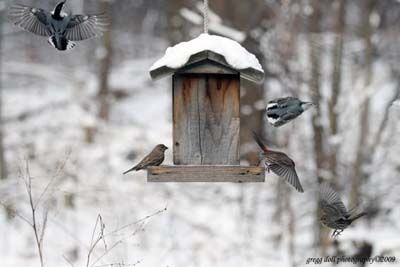
With the recent snows we've had the activity at the feeders picked up which allows for more pictures of comings and goings around the various feeders we have set out.
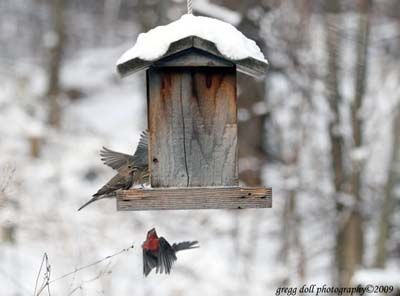
I chose this picture just because of the way the House Finch under the feeder keeps his eye on the feeder and the bird that is starting to take off on the left hand side of the feeder.
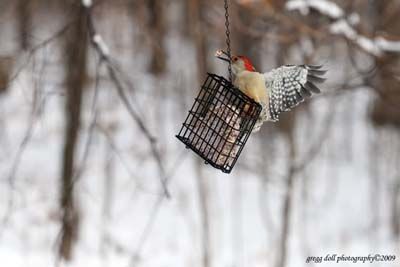
With one foot still hanging on to the side of the suet feeder this Red-bellied Woodpecker spreads his wings for the final release.
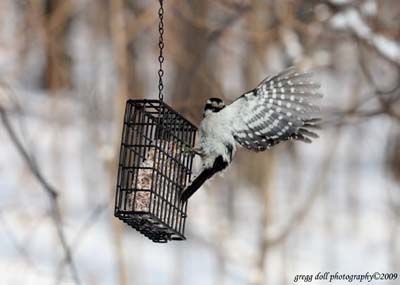
Turning it's head to decide which way it's going to go, this inmature male Downy Woodpecker prepares for flight.

White-breasted Nuthatch lands on the suet feeder already occupied by a Woodpecker.

Obviously, the Woodpecker is not ready to give up its free meal.
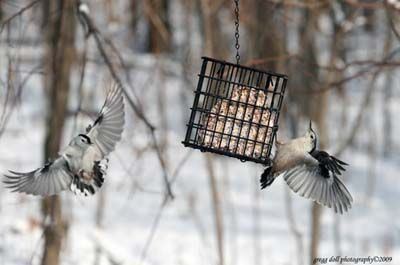
Two White-Breasted Nuthatches compete for this feeder.
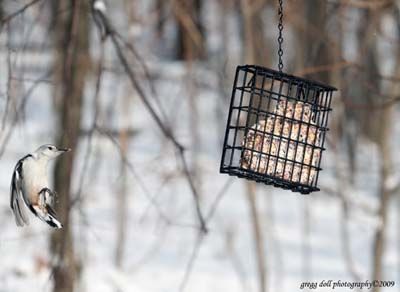
With its body bent into a concave form to break it's closing speed, a Nuthatch approaches the suet feeder.
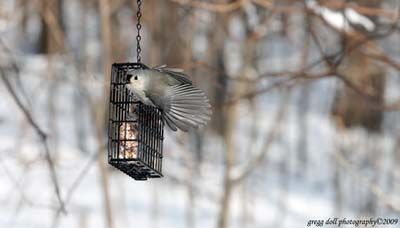
Tufted-Titmouse setting up for take off.

A Woodpecker closes its eyelids as if to make the approaching Nuthatch disappear.

From time to time budding photographers will ask me just how do I get all the pictures of the birds in flight that I show. The secret is using high shutter speeds and patience, a cable release and patience, a tripod and patience, and lots of time and patience. After that, it's easy.

Actually, all of the above is true but watching and learning what the birds do before they leave a feeder, how they cock their head, how their eyes look, how they reposition their body, are all indications that the bird is about to take flight. The hard part is developing your own timing and a sense of anticipation.
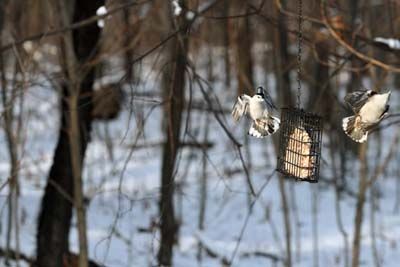
More aerial antics of the Nuthatches. You will notice that the Nuthatch on the left has it's tail feathers spread out and it's wings bend in such a way to also work as a braking system. While the bird taking off on the right hand side has its wings all but open trying to build lift as it moves away from the feeder. The tails of both birds act as rudders as well as brakes.

You can see in this photograph that the Dove is looking straight ahead as it pushes away from the bird feeder. I've learned that the bird will take off and fly straight for some distance because of how it's body is aligned at take-off.
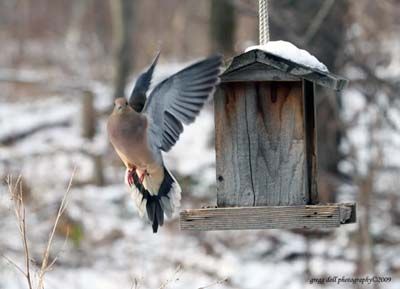
On the other hand, this Dove is only going to float to the ground. I can tell this by the position of its feet and the fact that the tail is pointed down. By the time the wings are folded back into the body, it will have landed, all in about a second.

This final photograph for the week shows one of the Mourning Doves as it approaches one of the sunflower feeder.

1 comment:
What a remarkable set of photographs! They capture the essence of bird flight better than any slow motion footage and are beautiful as well. I've been following your blog you almost a year and always look forward to your new posts. Seems what interests you is something that I also find interesting.
Thank you for your fine work!
Post a Comment